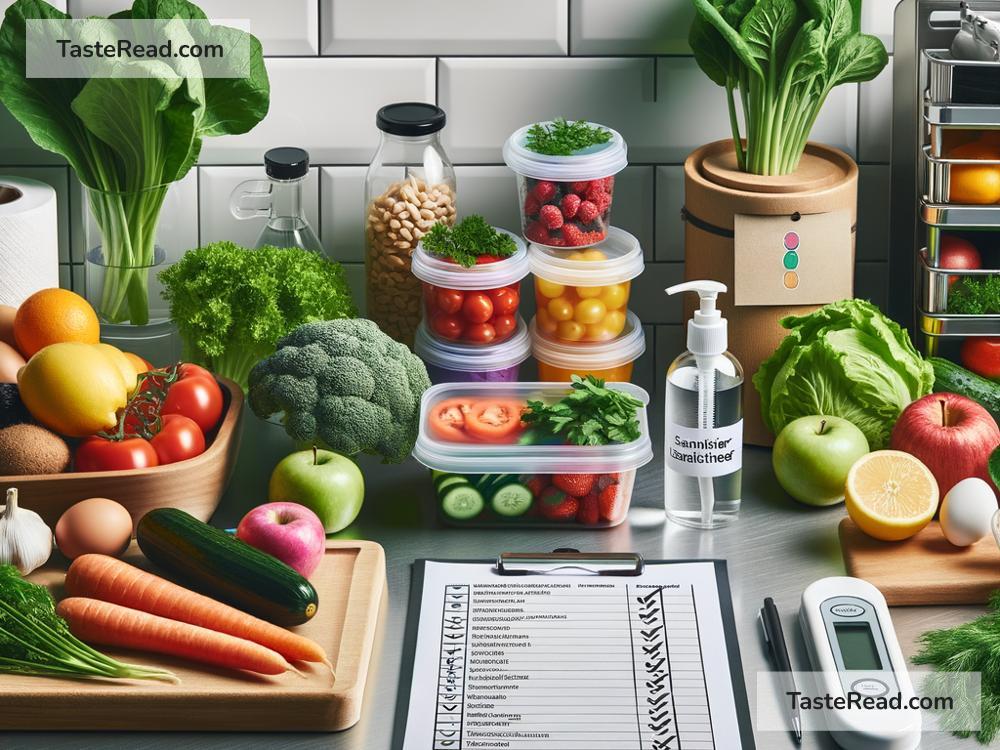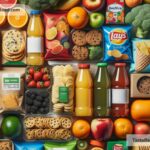The Impact of Food Safety on Nutrition
Food is essential for life. It provides us with the nutrients we need to stay healthy, have energy, and grow. But what happens when the food we eat is not safe? Unsafe food can lead to illness, poor nutrition, and other problems that affect our health and well-being. In this blog, we will discuss the impact of food safety on nutrition and why it is so important for everyone to pay attention to this issue.
What is Food Safety?
Food safety refers to the practices and measures we take to ensure that the food we eat is safe and free from harmful substances. Unsafe food can contain bacteria, viruses, parasites, chemicals, or other contaminants that make people sick. Food safety includes proper handling, storage, cooking, and cleaning to prevent contamination and maintain the quality of food.
How Does Unsafe Food Affect Nutrition?
When food is unsafe, it can impact nutrition in several ways:
1. Loss of Nutritional Value
Unsafe food can lose its nutritional value if it is not stored or handled properly. For example, fruits and vegetables that are spoiled because of poor storage lose important vitamins and minerals. Cooking food at very high temperatures can also destroy nutrients. If food is rotten or contaminated, people not only miss out on nutrition but may also consume harmful substances instead.
2. Foodborne Illness
Eating unsafe food can lead to foodborne illnesses, such as food poisoning. Common symptoms include stomach pain, diarrhea, vomiting, and fever. When someone is sick, their body loses nutrients and fluids, which can lead to dehydration and weakness. If illness lasts for a long time, it can result in malnutrition, especially in children, elderly people, or those with weakened immune systems.
3. Reduced Access to Food
Food safety problems can reduce the availability of nutritious food. For example, when crops are affected by pesticides or diseases, farmers may lose their harvest, and fewer healthy options are available in the market. Additionally, once people hear about food safety scandals (like contaminated meat or dairy products), they may stop buying certain foods, which limits their nutrition choices.
Who is Most Vulnerable to Unsafe Food?
Unsafe food can affect anyone, but some groups are especially vulnerable:
-
Children: Kids have smaller bodies and less-developed immune systems, so they can get sick more easily from unsafe food. When children suffer from illnesses caused by unsafe food, it can impact their growth and development.
-
Pregnant Women: Pregnant women need extra nutrients to keep themselves and their babies healthy. If they eat unsafe food, they risk serious health problems for both themselves and their unborn child.
-
Seniors: Older adults often have weaker immune systems, making them more likely to get sick from contaminated food. Illness can also worsen existing health problems in seniors.
-
People with Chronic Diseases: Those with health issues like diabetes or cancer are already vulnerable to health complications. Unsafe food can make their condition worse and reduce their ability to absorb nutrients.
Preventing Food Safety Problems
Good food safety practices can help protect nutrition and keep people healthy. Here are some key steps to follow:
1. Wash Your Hands and Food
Always wash your hands before cooking or eating. Wash fruits and vegetables under running water to remove dirt, bacteria, and pesticides.
2. Store Food Properly
Keep perishable foods, like meat, dairy, and leftovers, in the fridge to prevent them from spoiling. Make sure the fridge is set to the right temperature (below 40°F or 4°C). Store dry goods, like grains and nuts, in airtight containers to avoid pests and humidity.
3. Cook Food Thoroughly
Cook meats, eggs, and seafood to the recommended temperature to kill harmful bacteria. Use a food thermometer to check if the food is cooked safely.
4. Avoid Cross-Contamination
Use separate cutting boards and utensils for raw and cooked food to prevent harmful bacteria from spreading. Always sanitize your workspace after preparing raw foods.
5. Buy From Trusted Sources
Purchase food from clean and reputable stores or vendors. Check expiry dates and inspect packaging for signs of damage. Avoid buying food if it looks spoiled or has an unusual smell.
The Connection Between Food Safety and Healthy Eating
When food is unsafe, people are less likely to eat it, even if it’s supposed to be nutritious. This can lead to a reduced intake of healthy foods like fruits, vegetables, dairy, and proteins. On the other hand, safe and fresh food encourages people to maintain healthier diets.
For example, fresh milk is a good source of calcium and protein, but unsafe milk can harbor bacteria like salmonella or listeria. If someone avoids drinking milk because they fear contamination, they miss out on important nutrients that their body needs.
Food safety also plays a role in combating malnutrition in vulnerable communities. Ensuring clean food supplies can help children and families get the nutrition they need without worrying about illness.
Conclusion
Food safety is not just about avoiding sickness—it’s also deeply connected to nutrition and overall health. Unsafe food can reduce nutritional value, cause illness, and limit access to nutritious options. By practicing good food safety habits, we can protect ourselves and our families from harm while making sure we get the nutrients we need to thrive.
Let’s remember: Healthy eating begins with safe eating. Whether you’re cooking at home, buying from the market, or eating out, take steps to ensure that your food is safe, clean, and nutritious. After all, a safe plate is a healthy plate!


